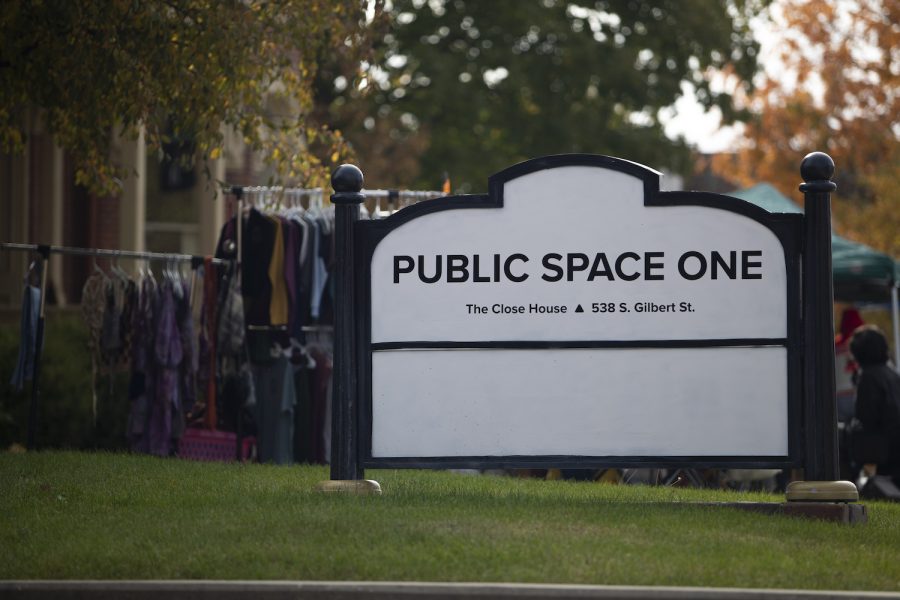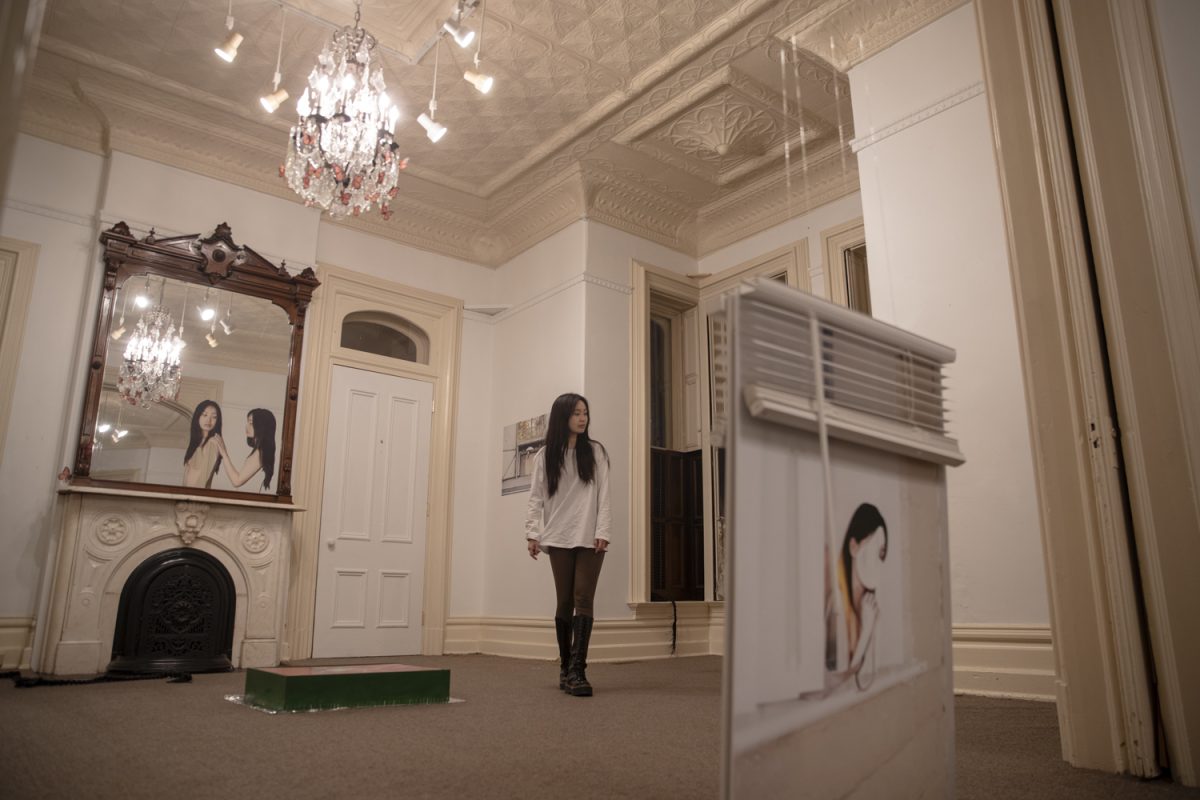Since the June 2008 flood, the UI Arts Campus has been out of commission, and its students have been relocated to various locations. But the art students haven’t let that stop them from thriving.
The two-day 23rd-Annual Art History Graduate Student Symposium, one of the country’s oldest and most esteemed art-history symposiums, will begin Friday in W151 Pappajohn Business Building.
This year’s theme is “Art and Catastrophe,” a natural choice after last summer’s flood.
Some subjects may hit close to home for flood-affected Iowans. This year’s keynote speaker, David Houston, will deliver the lecture “Why Art? The Cultural Response to Hurricane Katrina.”
“The purpose [of the symposium] is to bring graduate students from across the country together to Iowa City,” said Associate Professor Barbara Mooney, the head of the School of Art and Art History’s Art History Division. “It gives us national visibility, and our symposium has a good reputation for quality.”
Eight graduate students from across the country were selected by the Art History Society — a group of art-history graduate students that helms the symposium — to present their research on how devastation affects creativity.
“This year’s group is very well-rounded,” Mooney said. “The topics not only include natural disasters but political and social disasters as well.”
“There was a really great turnout for submissions,” said UI graduate student Wendy Bellew, an Art History Society member.
Significance
The annual symposium is important for the Art History Division, not only for the purpose of uniting students but to bring national attention to the city.
“It’s easy for the East and West Coasts to see the Midwest as filler states,” Mooney said. “We let them know we’re here and we have good students and a good program.”
This year’s symposium occurs at a stressful time for Iowa’s art school, now dealing with the remnants of its own disaster. After their buildings flooded, UI art students relocated to new work spaces and classrooms in other buildings both on campus and in the Iowa City area.
“It was hard for all of us,” art-history graduate student Karissa Bushman said. “[Art-history graduate students] were so used to having our great facilities. The technology we’re using now is horrible — sometimes the overheads don’t work correctly, and Mona Lisa ends up looking like Shrek. And everyone is really spread out.”
But despite the relevant subject matter, Mooney said, this year’s symposium won’t be any different in intent.
“The graduate students are learning professional skills, and they will be called upon in the future to organize or speak at other symposiums,” she said. “The main purpose of [the symposium] is to give them that experience.”
The graduate students
Ohio State University’s Catherine Walworth explores Realist painter Gustave Courbet’s fruit still lifes, the result of a stint in prison due to his political activism.
“No one could understand why he painted still lifes, so I investigated different reasons,” she said. Courbet wasn’t giving up but encoding them with different meanings. “He painted pomegranates sliced open and gory. I found out our word for grenade comes from pomegranate. Early grenades looked like pomegranates, and when they exploded, they exploded like pomegranate seeds.”
Chris Coltrin, from the University of Michigan, also connects politics to art. His research focuses on religious paintings from the early 19th century depicting the Bible’s catastrophic events.
He challenges the idea there is a natural connection between religious works and the political right.
“Instead of having a conservative meaning, these paintings actually point to social reform to avoid destruction,” he said. “The paintings suggest programs that help lower-class people and the government [should be] involved in assisting the poor and land reform.”
The speakers challenge traditional interpretations of selected artwork and give new meanings to catastrophe.
“There are going to be really great speakers from all over the country,” Bushman said.
She will deliver the final lecture of the weekend. Her work examines Spanish artist Francisco Goya’s depictions of the Inquisition in Los Caprichos, a series of prints.
Other graduate students selected to speak include Paula Burleigh (City University of New York), Tara Kohn (University of Texas-Austin), Marci Kwon (New York University), Katie Geha (University of Texas-Austin), Erin Hanas, and Rebecca Keegan (both of Duke University).
Admission is free, and Mooney said no prior knowledge is required for attendees.
“You don’t have to have an interest in art or art history to appreciate how the arts can help communities,” she said.
Firsthand Experience
Keynote speaker David Houston is the chief curator of the Ogden Museum of Southern Art, at the University of New Orleans, and he helped rebuild the museum after Hurricane Katrina. His lecture focuses on that experience and how art aids communities following disasters.
“In times of crisis, art and art institutions are important to preserving the culture of the region and helping the culture stay on its feet and move forward,” he said.
The Ogden Museum of Southern Art reopened in October 2005, one of the first museums to reopen post-Katrina.
“It was clear immediately that people living in the midst of devastation needed something that offered normalcy,” Houston said. “Since then, the cultural community as a whole, musicians, chefs, writers, and artists, have been leading the charge to rebuild the city. There is a burst of cultural vitality that surprised everyone.”
The museum had to be creative in order to rebuild because it was short on resources and staff.
“The way we had always done business was washed away,” Houston said. “We had to reinvent everything from sending a press release to moving a painting four blocks.”
Ultimately, these obstacles pushed the museum to be more active in the community.
“Instead of just being an art museum, it became a cultural center and a cultural resource in a different way than before the storm,” Houston said. “Now, [the museum] is more inclined to improvise and do things we wouldn’t have before.”
Houston has noticed a change in his lectures since Hurricane Katrina and its aftermath.
“Before Hurricane Katrina, a lot [of lectures] were theoretical,” he said. “The lesson of Katrina is to take intangible, embodied works of art and make them more personal. It is important to connect with people in a direct and human way.”
He also sees art as a way of rebuilding Iowa City and the surrounding flood-damaged areas.
“Art and culture are not the cherry on top but an integrated part of our daily lives,” Houston said. “Try to get people to come back by drawing on artists, chefs, actors to create a climate people want to be a part of. It is rebuilding the community, not just physical buildings.”






